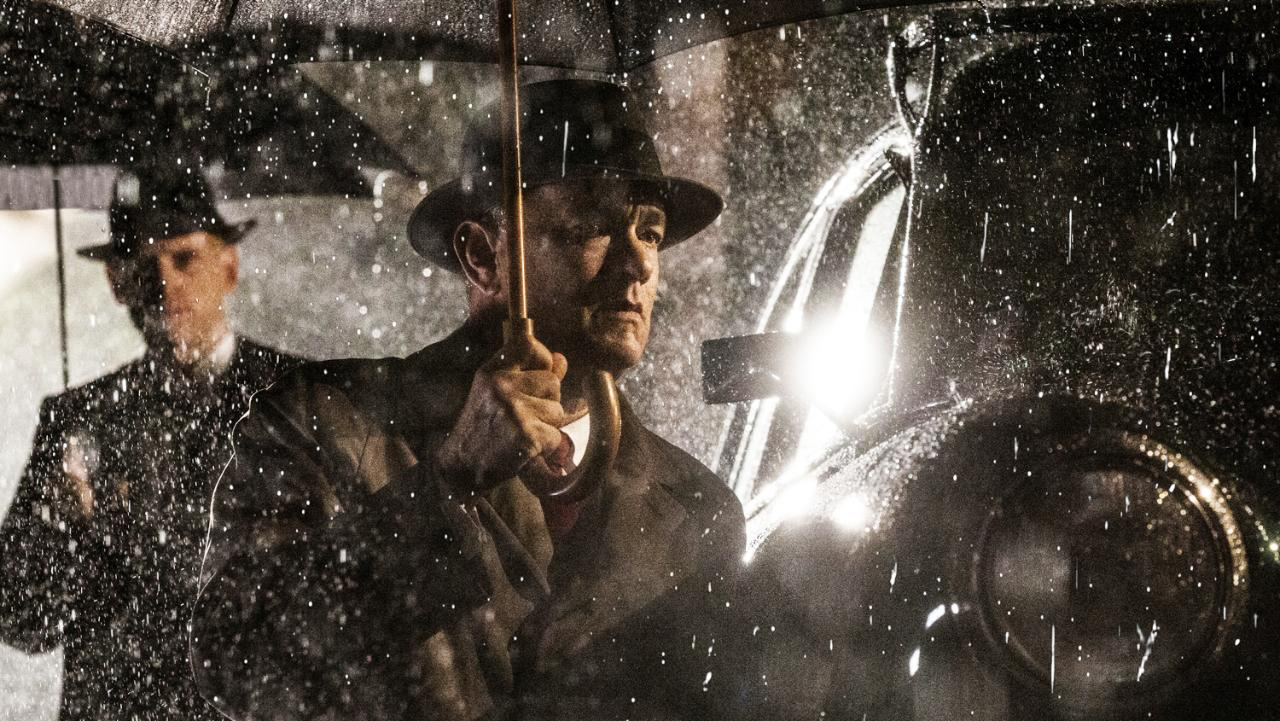Movie Review: ‘Bridge of Spies’

(DreamWorks Pictures)
By William Thorne
Oct. 7, 2015 2:56 a.m.
A wrinkled old man sits on a park bench in Brooklyn, painting the bridge he faces across the water.
After a few deft strokes of his brush, he leans forward and pries a quarter stuck on the underside of the bench. When he returns to his shabby hotel room, the man takes a razor blade, attaches it to a matchbox, and cuts open the coin down its seam to reveal a secret piece of paper folded up inside.
Steven Spielberg’s movie “Bridge of Spies” is set during the Cold War and stars Tom Hanks. It begins in a delightfully subtle and unhurried way, as the audience follows the comings and goings of Rudolf Abel (Mark Rylance), a suspected Soviet spy. Abel seems to spend most of his day riding the subway, stopping at various places in the city to set down his easel and bring out his brushes.
If it weren’t for the band of chiseled FBI agents following him around, no one would ever suspect him of being an agent: He has a warm, round face and stubby, bushy eyebrows that wobble up and down when he talks.
When Abel is arrested and tried on suspicion of espionage, New York lawyer James B. Donovan (Hanks) is called in to give him a token defense, demonstrating in theory that every criminal in America gets a fair trial, even spies. However, Donovan will not rest until he achieves what he thinks is right, even if that means negotiating an exchange of Abel for an American surveillance pilot in volatile East Berlin.
“Bridge of Spies” is very handsomely mounted, almost like one of Abel’s paintings at times, with grainy shots of New York and darker shots of East Berlin used to help differentiate the two cities.
The duality between the two sides of the Iron Curtain is further reinforced through the depiction of law courts. On one hand, Abel is tried in a cramped courtroom lined with mahogany and filled with angry Americans baying for his execution. On the other, Francis Gary Powers, the U-2 spy plane pilot downed over enemy territory, is tried in a vast concrete block with cavernous ceilings whose occupants rise and vigorously applaud in unison when the guilty verdict is announced.
Spielberg’s cleverest trick with “Bridge of Spies” is to take a small event in the midst of the Cold War and make it of utmost importance in the avoidance of a full-blown nuclear conflict.
For most directors, the story of the trial of a Soviet spy on U.S. soil might be enough for a movie; however, Spielberg sees this as only the beginning, moving the narrative along at varying paces. The film starts off slowly with Abel, but becomes more fast-paced when Donovan rushes to see the exchange through before either agent reveals all to their captors.
Hanks is excellent in the lead role, proving once again that he is the king of portraying morally upstanding characters in the face of dissent from all quarters. However, he was careful not to make Donovan come across as too perfect. Hanks paints a picture of uncertainty and concern when he asks himself if he has let his country down if Abel is guilty after all.
Despite this, the film’s most captivating performance comes from Rylance who steals every second he is on screen as Abel. Coming from a background of Shakespearean theater acting in the United Kingdom, Rylance transfers his skills to the big screen by making his character an enigma the audience is unable to crack.
Although the entire American public and justice system believes him to be a spy, and the audience even sees him receive a coded message, the doubt is always there as to his true motives. Rylance cleverly brings a liquid accent to the role, with Scottish undertones, some phrases seemingly from the north of England and a crisp Russian inflection when needed.
When Hanks and Spielberg come together, the audience can usually expect quality filmmaking, and “Bridge of Spies” meets this expectation. Although the film doesn’t match the power and emotion of Spielberg’s greatest films, it still serves as a fun spy thriller with an important message of how people can successfully stand up for what they believe in, even if the opinion of their whole country is against them.
– William Thorne

